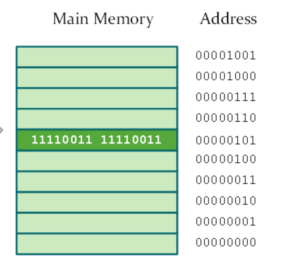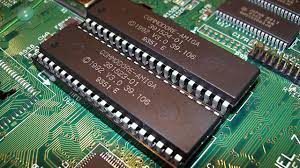The Main Memory
Main Memory is used to temporarily store programs while they are being run. It is part of the central processing unit and consists of RAM and ROM .
Main memory consists of storage locations which are identified by unique addresses.

Each storage location holds one word (the number of bits the CPU can process in a single operation)
- 8 bit computer holds 8 bits in a storage location
- 16 bit computer holds 16 bits in a storage location
Rom and RAM
There are two types of main memory:
- Random Access Memory (RAM)
- Read Only Memory (ROM)
RAM (Random Access Memory)
When a program is running, the data that will be processed by the processor is temporarily stored in RAM. RAM will hold data until it is needed by the processor.
When a program is closed the data held in RAM is deleted.
When the computer system shuts down, RAM is cleared completely.
There are many different locations in RAM and each location has its own unique address.
The more RAM that is available, the more programs it is possible to run concurrently (at the same time) without slowing system performance.
ROM (Read Only Memory)
Has contents in Rom which are fixed when the chip is manufactured – cannot be changed or written to.
The ROM memory holds the bootstrap loader, which is part of the operating system
Retains its data when the computer is switched off – non-volatile

